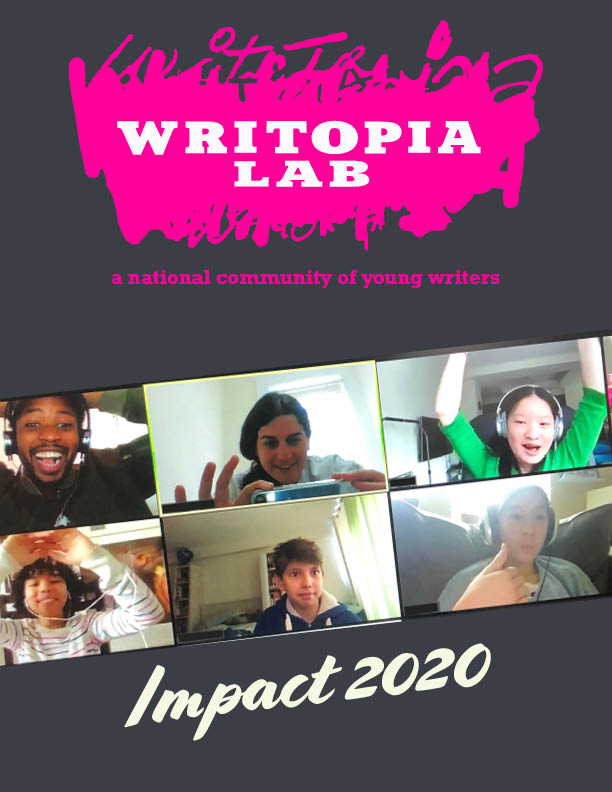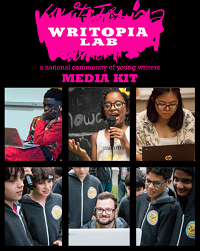Whether you’re writing an email or a novel, it’s vital these days to understand the craft of telling a story and telling it well. For kids, writing well helps not only at school but with many off-the-page skills, from confidence to creative problem solving.
What children may not understand is that writing can also be fun. Educators say there are many things parents can do at home to get kids excited about writing.
Here are seven:
___
USE WHAT THEY LOVE
Show your children there’s more to writing than book reports and research papers. Those are important, yes, but the first step to helping kids enjoy writing is giving them freedom to write about what they love.
“Every child, even the most reluctant writer, has something they’re excited and passionate about, and there’s a way in,” said Marjolaine Whittlesey, a teaching artist associate at The Telling Room, a Maine-based nonprofit writing center.
Youth-oriented creative writing centers around the country use similar techniques. Tim Whitaker, founder and executive director of Mighty Writers, in Philadelphia, said his group listens to what kids are interested in — from superheroes to girl power to basketball — “and we build our writing topics around that.”
___
BEGIN VISUALLY
Help kids learn to create new worlds out of pictures — ones they draw themselves or ones they find. Amy Rosenbluth, co-founder and executive director of Lake Erie Ink, an Ohio-based youth writing center, said her organization’s comic-making camps are among its most popular.
“When you’re writing a comic, you’re learning all the elements of writing a short story, or really writing anything,” she explained. “We teach them storyboarding. They start out with character development, then setting, conflict, all the same elements, but you get to draw your character first before you add the words.”
___
SHARE PEERS’ WRITING
Kids may feel more motivated to write when they’re exposed to work by their peers, said Caroline Patterson, executive director of the Missoula Writing Collaborative in Montana. “Several times we’ve had students who hear work by kids their own age and go, ‘Well, I could do that,’” she said.
Many youth writing organizations, like New York City-based Writopia, publish student work online that parents can share with their kids.
___
AVOID CRITICISM
“Be an ally to your writer — celebrate and love whatever they’re writing,” said Rebecca Wallace-Segall, executive director of Writopia.
Parents should be “laughing when the child is trying to be funny, being moved when there is something emotional . these are very sensitive moments. These are high stakes moments when a child is sharing their writing. Don’t take them lightly, don’t laugh in a condescending way even if it feels a little bit off — hold all that in.”
That helps kids feel heard and excited about their work, which will lead to more writing.
Rosenbluth, of Lake Erie Ink, urges parents not to focus on spelling and grammar when their children are working on creative writing.
“Spelling and writing don’t have a lot in common,” she said. “Writing is thinking. It’s creating.”
This doesn’t mean you can’t go back and work on the mechanics later, she stressed, but they shouldn’t be the starting point.
___
DEMONSTRATE THAT THE PEN HAS POWER
Brian Townsend, a Chicago-based fifth-grade writing teacher in the Kipp Charter Schools network, tries to show his students how they can use writing to make a difference. He shares motivational speeches and inspirational songs to demonstrate how good writing can communicate powerful messages. He even had his students write letters to their senators about a bill that would affect the food served in their cafeteria.
He wanted to remind them of the real purpose behind writing: to effect change.
___
CHANGE THE QUESTIONS
Jaya Mukherjee, a program manager at a youth literacy center in Chicago, Open Books, said parents can use writing prompts that might be more effective than starting with a direct question. Ask young writers, for example, to list 10 things they would save from their home if it were on fire, and then have them pick one item from their list and write about why they chose it. That approach might remove the daunting feeling of staring at a blank page.
WRITE WITH THEM
Several experts said sitting down to write beside your child can be a powerful technique. As Whittlesey said, “By doing it alongside them, I think we’re demonstrating that we’re excited about writing too, and that it’s accessible to everyone.”
Copyright 2017 The Associated Press. All rights reserved. This material may not be published, broadcast, rewritten or redistributed.


